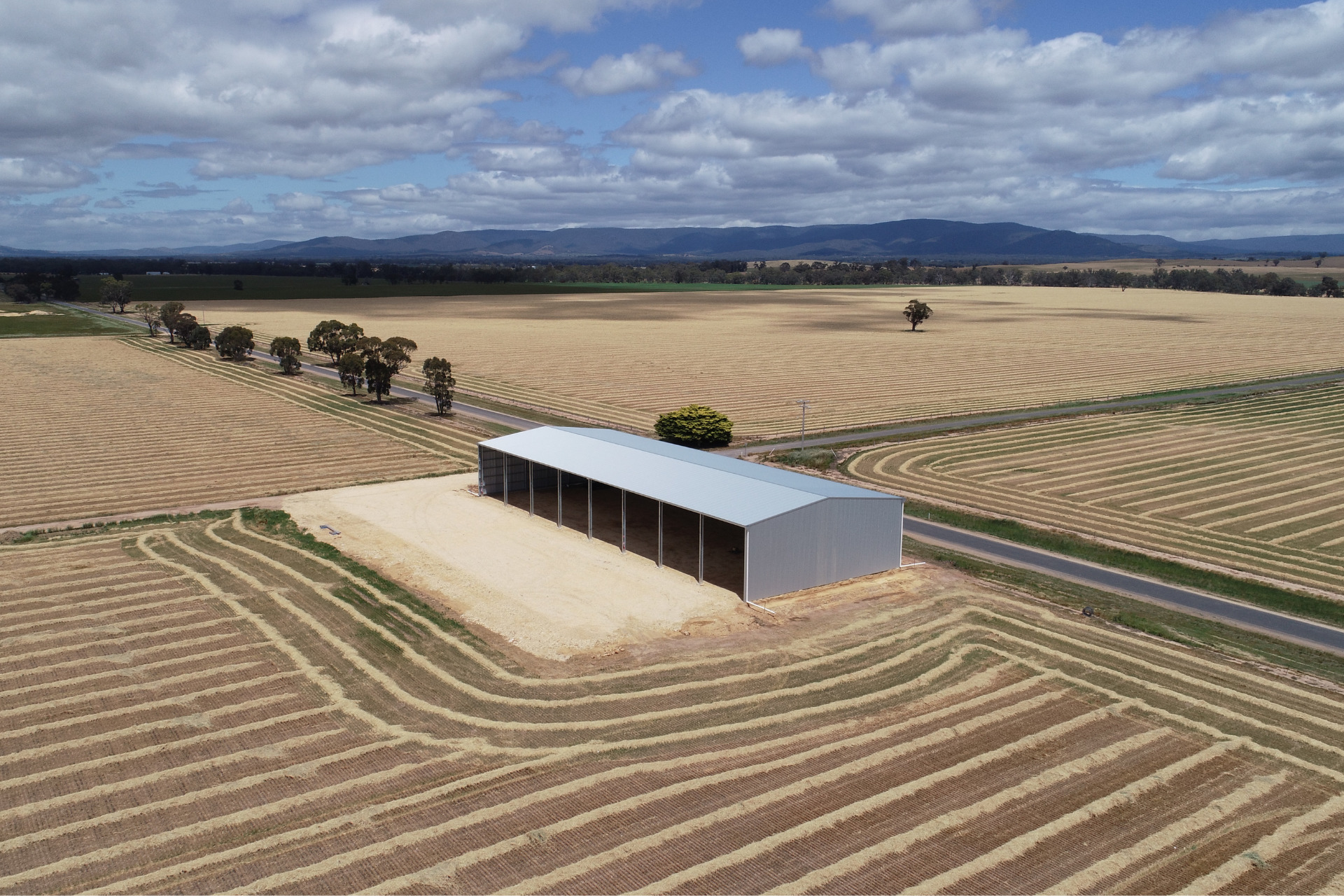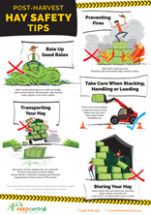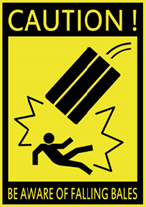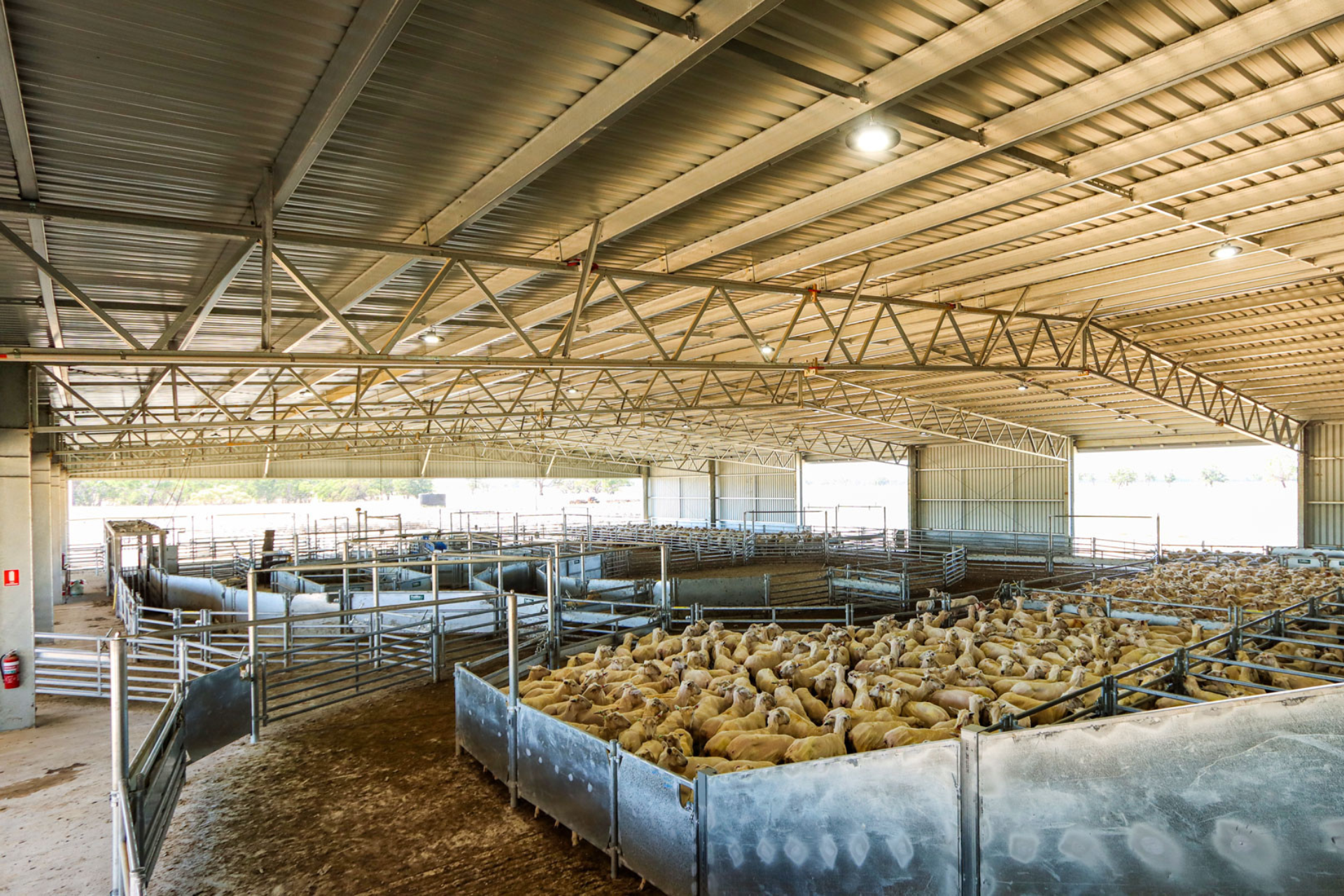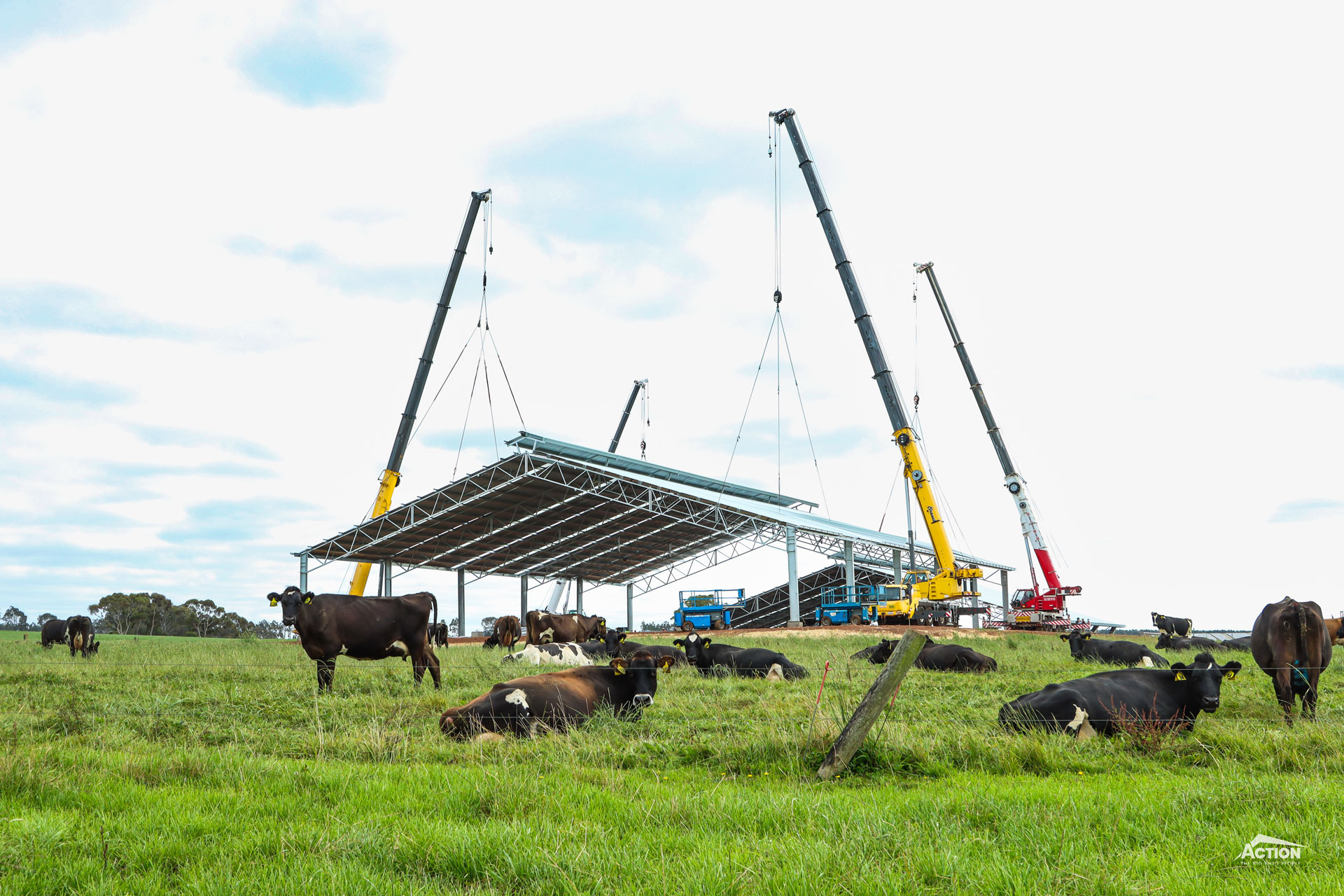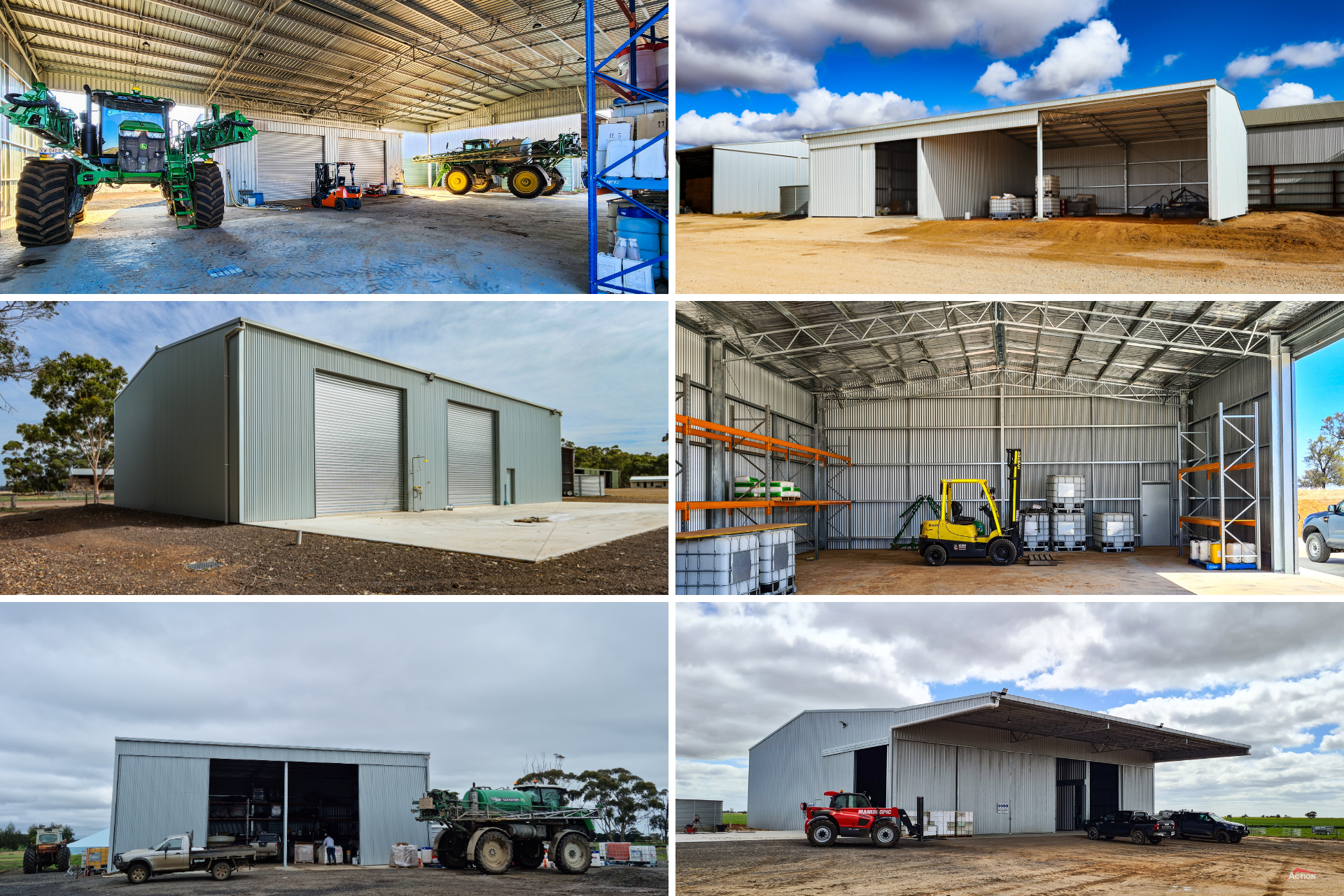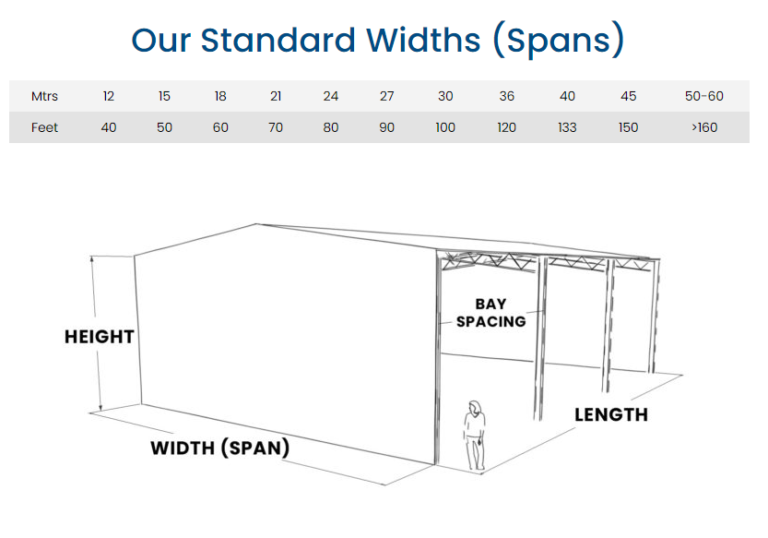Risks and hazards associated with hay storage include falling bales and spontaneous combustion, which is why safe hay storage is so important.
Here are several hay safety recommendations and useful resources to ensure your hay storage is as safe as possible.
A well-designed hay shed
Storing your hay in a shed specifically for hay is important for a number of reasons.
Firstly, a shed designed for hay storage will include bay spacings that allow airflow and easy testing of hay bales.
Including an Action custom gutter system on your hay shed reduces the risk of downpipes being damaged by machinery and allows rainwater to be directed away from the hay.
And thirdly, machinery, fertiliser and chemicals are a fire risk and should be stored separately to hay.
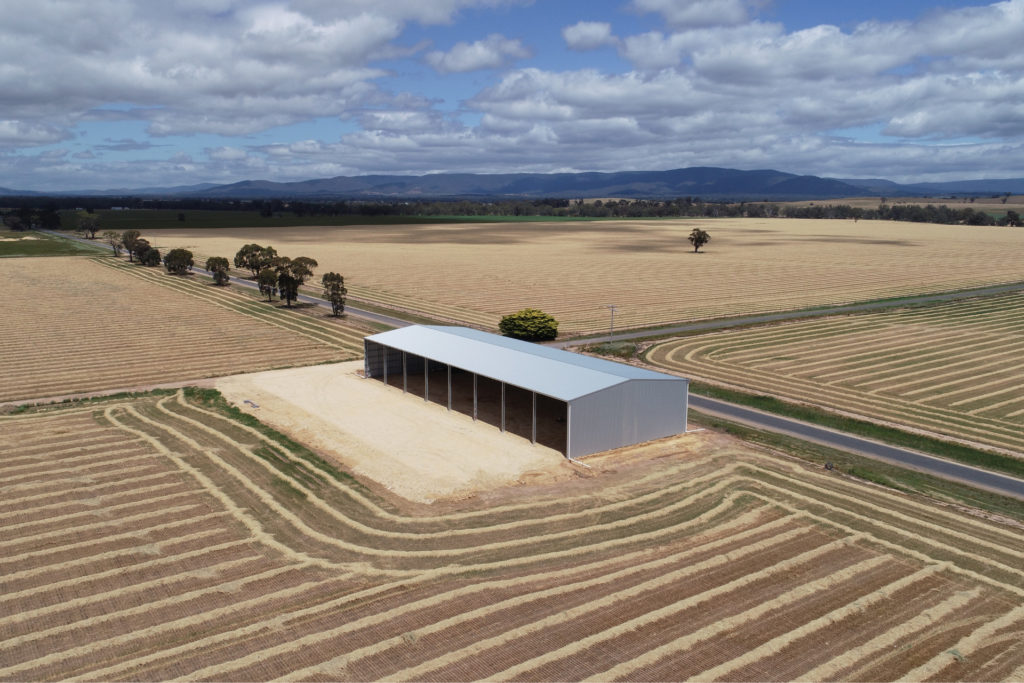
Safe, stable haystacks
The best way to stack the hay in your hay shed is to stack it safely.
Choose the right stack formation, stack your hay on a clear, level site and only stack your hay as high as your equipment allows
Learn more about safe haystacks in our article; The best way to stack your hay.
Fire safe and fireproof
Baling your hay at the correct moisture density and conducting regular testing of hay bales helps minimise the risk of fire.
Other tips to prevent fires in your hay shed include keeping the site clear of rubbish and flammable material and building hay sheds away from your chemical and fertiliser storage sheds.
You may also need to install water tanks and fire extinguishers to meet fire design requirements
Authorised, trained personnel only
Ensure that your workers are correctly trained and supervised when working with hay and that only authorised people have access to the storage site and machinery. No children should have access to hay storage areas at any stage.
Use clearly marked exclusion zones to keep bystanders safe. This is especially important when loading and unloading the shed.
Powerlines
While a shed can be built near a power line if it satisfies requirements, operating machinery like telehandlers near powerlines is a significant safety risk and should be managed accordingly.
Employees should be made aware of the powerlines, educated on clearances and exclusion zones, and trained to lower machinery when operating under or near powerlines.
Signage
Use signs to ensure bystanders are aware of exclusion zones and educate them of potential hazards.
Install signs on trucks, and in and around sheds to keep hay safety front-of-mind for your employees and operators.
Monitoring and maintenance
Regularly monitor your hay storage for stack stability and bale conditions such as rising temperatures.
If you are concerned about protecting the rear wall of your hay shed from falling bales, we recommend installing hay bumps.
Machinery and equipment used to load and unload your hay shed should also be kept serviced and the maintenance up to date.
For more safe hay storage tips and recommendations, discuss your shed project with us, or download a copy of our latest hay shed guide.

